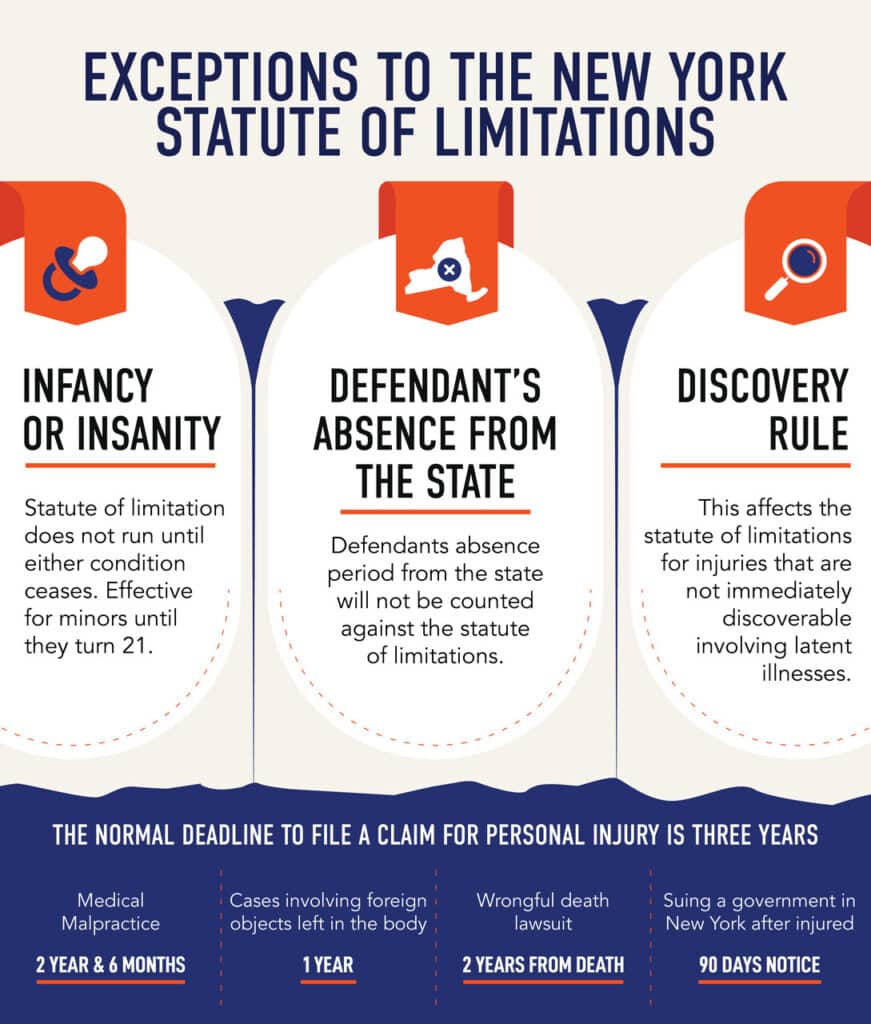- The general statute of limitations for personal injury lawsuits in New York is three years from the date of injury.
- Failure to file your personal injury claim before the governing deadline passes will result in it being dismissed in court.
- Exceptions to the New York statute of limitations exist in cases involving minors, insanity, undiscoverable injuries, and out-of-state defendants.
Injured in New York? The personal injury statute of limitations normally gives you three years from the accident date to file a lawsuit. Subject to very limited exceptions, your case will be dismissed in court if you miss the strictly enforced filing deadline. Do not wait to take legal action. Chopra & Nocerino is ready to evaluate your claim, investigate the governing law, and make sure your personal injury lawsuit is filed on time.
Statutes of limitations exist for many reasons, some quite theoretical. These include encouraging the prompt filing of claims, protecting defendants from the indefinite threat of being sued, and conserving judicial resources. Each state sets its own deadlines for various kinds of claims, ranging widely from contractual disputes to personal injury claims.
Again, in New York, injured plaintiffs normally have three years from the date they were harmed to file a personal injury claim. Failure to file your claim before this deadline normally results in it being dismissed in court.
There are two consequences to this result. First, it eliminates your right to seek legal compensation in court. Second, it eliminates your bargaining power in out-of-court settlement negotiations once defendants realize you can no longer sue.

Are There Exceptions to the New York Statute of Limitations?
Potentially. There are several exceptions to the statute of limitations that can pause (“toll”) the filing countdown, giving plaintiffs more time to file. They include:
- “Infancy or Insanity” – If the injured party is a minor or insane at the time of injury, the statute of limitations does not start running until either condition ceases. Effectively, this extends the statute of limitations for minors until their 21st birthday.
- Defendant’s absence from the state – If the defendant is absent from the state, the period of their absence will not be counted against the statute of limitations.
- Discovery rule – For injuries that are not immediately discoverable, the “discovery rule” may toll the statute of limitations until it is discovered or reasonably should have been discovered. This often applies in cases involving latent illnesses, such as those caused by exposure to toxic substances.
Further, not all cases involving physical harm are governed by the three-year deadline. For example, medical malpractice lawsuits must be filed within two years and six months from the date of the malpractice (or its discovery), and cases involving foreign objects left in the body (e.g., during surgery) must be filed within one year. Also, if a personal injury leads to death, estate representatives have two years from the date of death to file a wrongful death lawsuit.
In addition to statutes of limitations, there may also be other important filing deadlines for you to keep in mind. For example, when suing a government entity in New York, you must give notice within 90 days after being injured. Similarly, your own insurers will require notice of an accident even sooner.
Contact the Skilled Personal Injury Attorneys at Chopra & Nocerino
Chopra & Nocerino is a full-service personal injury law firm. As the exclusive personal injury law firm of the New York Mets, we are ready to step up to the plate to defend the rights of accident victims throughout the five boroughs. Schedule your free consultation today by calling (855) NYC-HURT or filling out our online contact form.














